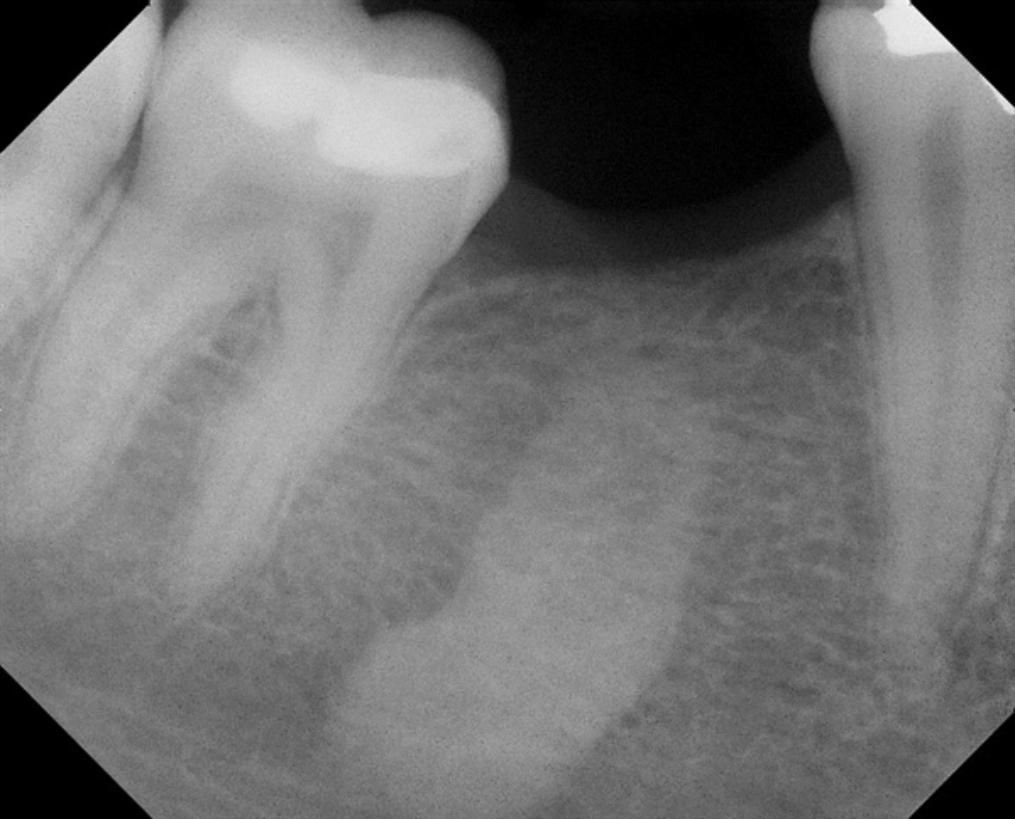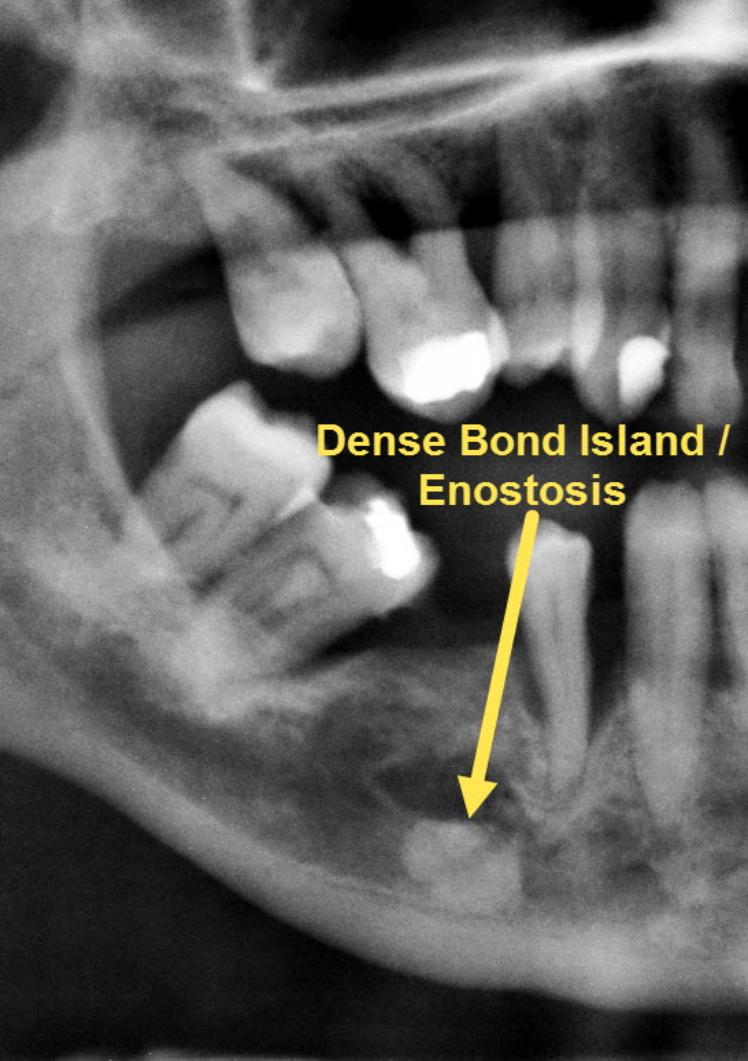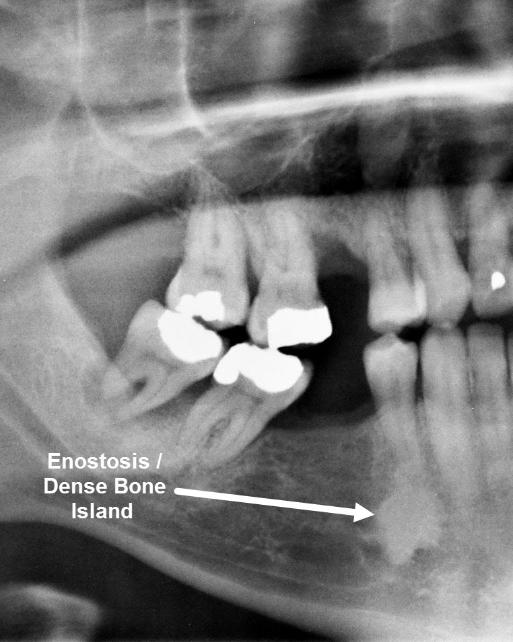Dense Bone Islands
Dense Bone Islands (DBI’s) are also known as enostoses or idiopathic osteosclerosis, bone scar, focal osteosclerosis and peri-apical osteopetrosis.
What are Dense Bone Islands (DBI’s)?
Dense Bone Islands are synonymous with enostoses or idiopathic osteosclerosis, bone scar, focal osteo-sclerosis and peri-apical osteo-petrosis.
Dense Bone Islands (DBI’s) present as areas of increased osseous (bone) defined borders, located at or around the apical regions (root tips) of teeth, inter-radicular area or with no apparent connection to the teeth.
DBI’s typically manifest as an incidentally discovered, well-defined homogenous radio-opacity that is of unknown cause and cannot be attributed to any inflammatory, dysplastic, neoplasia or systemic disorder. Focal internal growth of bone commonly seen in the premolar-molar region of the mandible.
They are the internal counterparts of exostoses. These are localised growth of compact bone that extends from the inner surface of cortical bone into cancellous bone. It represents a focus of mature compact (cortical) bone within the cancellous bone (spongiosa).
It is also called a “whorl”. A rare condition in which thousands of DBI’s scattered through the skeleton is known as osteopoikile or osteopoikilosis.
What are the signs & symptoms (+ demographics)?
DBI’s can arise at any age. The number of DBI’s is found to be significantly higher in the 2nd decades and 3rd decades in life (10 – 19 and 20 – 29 years) than in other periods.
The effect on adjacent teeth may include indistinct lamina dura and periodontal ligament space and root resorption. The associated teeth are usually asymptomatic. DBI’s do not cause osseous expansion; hence, these do not affect the fit of dentures.
In some cases, it inhibits the eruption of normal teeth. Tooth is vital in affected area.
In rare cases, it may cause external resorption (due to pressure) when it is located peri-apical to the tooth.
No change in size or any malignant potential.
What are the causes of Dense Bone Islands (DBI’s)?
Unknown ætiology but may be considered a normal developmental anatomic bone variation.
How are they diagnosed?
DBI’s are usually found on routine radiographic investigations.
These lesions are ‘cold’ on scintigraphy scans.
Single isolated radio-opacities that may be well defined or diffuse so that the trabeculæ blend with the trabecular pattern of adjacent normal jaw bone. It is more or less rounded with size varying from a few millimetres up to a centimetre or more.
The shape of the DBI is classified as either round or irregular.
The location of the lesion is classified as mandibular or maxillary firstly, then further by region of the jaw: Incisive, canine, canine-premolar, pre-molar, pre-molar-molar or molar.
How are they treated?
Once, the condition is diagnosed, treatment is neither indicated nor necessary.
Differential Diagnosis:
Benign cemento-osseous lesions and inflammatory lesions such as apical sclerosing or condensing osteitis.
• Peri-Apical Idiopathic Osteo-Sclerosis (periodontal ligament widening)
• Peri-Apical Cemental Dysplasia (radio-lucent margin; vital teeth; separated from surrounding bone by a radio-
lucent border or rim of varying thickness)
• Hyper-cementosis (integral part of formed root; within intact lamina dura & periodontal space; vital tooth)
• Cemento-blastoma (associated with root of teeth; vital & painful)
• Osteo-sarcoma
• Metastatic osteo-blastic carcinoma
• Chondro-sarcoma (radio-lucent component present)






